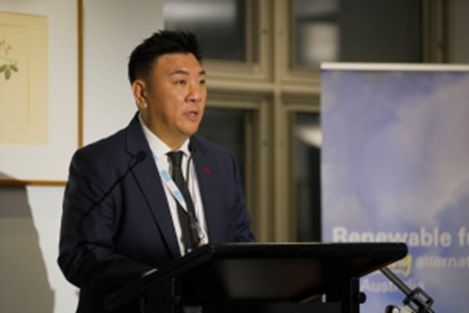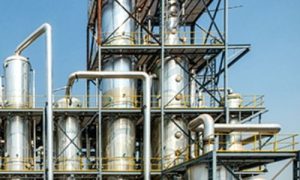USGC Highlights Emerging New-Use Opportunities For Ethanol At Industry Events In Singapore, Australia

The U.S. Grains Council’s SEA&O team engaged in bioenergy conferences, highlighting ethanol’s role in decarbonization and global development. Southeast Asia explores cellulosic ethanol production. In Australia, Bioenergy Week advocates ethanol for decarbonization, with New South Wales and Queensland already implementing blending mandates. The U.S. supplies ethanol, and Australia advances in SAF technology with a new facility. The Council offers expertise to support Australia’s transition to cleaner transportation fuels.
The U.S. Grains Council’s Southeast Asia and Oceania (SEA&O) team recently participated in two leading bioenergy conferences in the region, underscoring the pertinent role ethanol can play in emerging new-use areas for transportation decarbonization and how the U.S. ethanol industry can support development in these areas globally.
The Argus Biomass Asia Conference and the Australian Renewable Fuels Week, held in Singapore and Canberra, respectively, both draw hundreds of attendees from across the globe, with stakeholders ranging from regulators and policymakers to producers, traders and investors.
Held annually in Singapore, the Argus Biomass Asia Conference attracts more than 200 biomass industry leaders from Asia, Australia, Europe and North America. This year’s event included the first-ever Biofuels Session that provided a platform for biofuel industry thought leadership, including the Council, to detail potential policy actions, technological innovations and commercial dynamics that could create new opportunities and impact traditional trade flows for Asian biomass suppliers and traders.
“The lignocellulosic biomass-to-ethanol industry is still a nascent space in Southeast Asia, let alone globally. However, given the region’s lignocellulosic biomass, this ethanol production pathway shows potential in Southeast Asia as U.S. ethanol and traditional biomass feedstocks such as corn and sugarcane can be leveraged to create demand centers that drive investment into cellulosic ethanol production,” says Chris Markey, USGC SEA&O deputy regional director.
Southeast Asia is already a major supplier of Asia’s fast-growing demand for biomass feedstocks. Indonesia, Vietnam and Thailand supply a significant amount of the biomass pellets used across Asia to transition power generation away from coal and other fossil fuels.
“As road fuel ethanol policies continue to expand in the region and countries look to capitalize on investment opportunities related to sustainable aviation fuel (SAF) and bioplastics, there will be potential to leverage the vast amount of biomass across Southeast Asia for ethanol usage as new ethanol production technologies for cellulosic ethanol are commercialized. The U.S. coarse grain and co-product industry is well positioned to supply sustainable feedstock and blend stock to these industries in Asia as they look to stimulate investment and commercialization in these areas,” Markey said.
The second annual Australian Renewable Fuels Week, organized by Bioenergy Australia, kicked off in Australia’s capital of Canberra at the Australian Parliament with an audience comprising Australian legislators and bioenergy industry leaders from Australia, the United States, Asia and Europe. Kent Yeo, the Council’s SEA&O regional ethanol consultant, provided opening comments for the session, stressing the impact ethanol can immediately have on galvanizing both Australia’s decarbonization and economic ambitions.
“Australia has an opportunity to meet the objectives outlined in the country’s strategic Bioenergy Roadmap through expanded ethanol use,” Yeo said.
“Already at a provincial level, Australia has shown its commitment and ability to effectively blend ethanol. The country can build upon this previous success and established technical knowledge to expand these regional blending policies to a national policy. This undertaking will not only result in crucial greenhouse gas (GHG) emissions reductions for current and future generations of Australians, but it will also bolster fuel and energy security, generate significant economic opportunities for tens of thousands of Australians through job creation and onshore value-added manufacturing.”
Two Australian states, New South Wales and Queensland, currently have ethanol blending mandates of E6 and E4, respectively. Australia’s domestic industry supplies most of the country’s demand, though U.S. ethanol is at times imported (5.4 million gallons in 2021 and 12.7 million gallons in 2022) to supplement domestic production. Moreover, the country’s first ethanol-to-jet SAF facility is now set to move forward using technology from LanzaJet. The 27 million-gallon-per-year project, to be developed by Jet Zero Australia in Queensland, has already attracted investment from Qantas, Idemitsu and Airbus.
“The Council stands ready to provide technical and advisory expertise in the bioethanol space as Australia strives to power its road and aviation transportation sector with cleaner, environmentally friendly fuel,” Yeo added.

















